Acerola Cherry: A Complete Guide
Introduction
Acerola cherry, also called Malpighia emarginata, is a vibrant tropical fruit known for its exceptional nutritional value. Native to the Americas, including the Caribbean and Central America, this cherry-like fruit thrives in warm climates. Acerola cherries are celebrated for their high vitamin C content, surpassing that of oranges and other common fruits. With a tangy flavor blending sweet and sour notes, they are a versatile addition to many diets worldwide. Their popularity has grown due to their health benefits, culinary uses, and potential as a natural dietary supplement. Acerola cherries can be enjoyed fresh, juiced, or in smoothies, enhancing health-conscious lifestyles. This guide explores eating, growing, and benefiting from acerola cherries in everyday life.

What Are Acerola Cherries?
Acerola cherry is a bright red fruit that grows on a small shrub or tree. Resembling a standard cherry in size and color, it differentiates itself through its unique flavor and nutritional content. Acerola cherries are soft and delicate, with a thin skin that makes them highly perishable. They grow in clusters and are harvested at peak ripeness to preserve their rich nutrient profile. The fruit’s pulp contains an impressive concentration of vitamin C, significantly higher than that of oranges, making it one of the most potent natural sources of this essential nutrient. Additionally, acerola cherries are rich in carotenoids, anthocyanins, and other antioxidants, which contribute to their health benefits and vibrant color.
How to Eat Acerola Cherry
Acerola cherries can be enjoyed in several ways, depending on personal preference and availability. Fresh acerola cherries are often consumed raw, offering a burst of tangy flavor that is both refreshing and energizing. To eat fresh acerola cherries, simply rinse them thoroughly under running water to remove dirt or debris. Since the fruit is soft and juicy, it’s best to consume it immediately after washing to preserve its texture and flavor.
For those who prefer a more versatile approach, acerola cherries can be blended into smoothies, juices, or even pureed into sauces for desserts and savory dishes. Acerola juice is a popular option, particularly in tropical regions where the fruit is readily available. Its tart flavor pairs well with sweeter fruits like mangoes, bananas, or pineapples, creating a balanced and nutritious drink.
Dried acerola cherries are another excellent option for snacking. These are often sweetened to reduce the natural tartness and can be added to trail mixes, cereals, or baked goods. Additionally, powdered acerola is a convenient alternative for those looking to enjoy the fruit’s benefits year-round. This powdered form can be stirred into beverages, sprinkled over yogurt, or mixed into oatmeal for a quick vitamin boost.
Why Do People Eat Acerola Cherry?
The primary reason people consume acerola cherries is their exceptional nutritional profile. Acerola is renowned as one of the richest natural sources of vitamin C, with just one cup of fresh fruit providing more than 1,600% of the recommended daily intake. This potent vitamin is essential for immune system support, collagen production, and overall skin health. It also helps combat oxidative stress, reducing the risk of chronic diseases like heart disease and cancer.
Aside from its vitamin C content, acerola cherries are packed with other essential nutrients, including vitamin A, magnesium, and potassium. Vitamin A contributes to better vision and immune function, while the mineral content supports cardiovascular health and muscle function. The fruit’s high antioxidant levels help neutralize free radicals, promoting healthy aging and reducing inflammation. Acerola cherries are particularly popular among health enthusiasts seeking a natural and nutrient-dense addition to their diet.
Additionally, acerola cherries are often used in traditional medicine to treat conditions such as colds, diarrhea, and liver disorders. Their anti-inflammatory properties and immune-boosting effects make them a valuable component of holistic wellness practices. In modern times, acerola cherry extracts are frequently included in dietary supplements and skincare products, thanks to their rejuvenating and protective qualities.
Growing Acerola Cherry Trees
Acerola cherry trees thrive in warm, tropical climates but can also be grown in subtropical regions with adequate care. These small, fast-growing trees require well-draining soil rich in organic matter. A sunny location is ideal, as acerola cherry trees need at least six to eight hours of direct sunlight daily to produce abundant fruit.
To plant an acerola cherry tree, start by selecting a healthy sapling from a reputable nursery or garden center. Dig a hole twice as wide as the root ball and slightly deeper than its height. Place the sapling in the hole, ensuring the roots are spread out evenly, then backfill with soil. Water thoroughly to settle the soil and encourage root establishment. Mulching around the base of the tree helps retain soil moisture and regulate temperature.
Regular watering is essential, particularly during the tree’s establishment phase and fruiting season. Acerola cherry trees are drought-tolerant once mature but will produce better yields with consistent moisture. Fertilizing with a balanced fertilizer during the growing season promotes healthy growth and fruit production.
Pruning is another important aspect of acerola cherry tree care. Regularly remove dead or diseased branches and shape the tree to encourage air circulation and sunlight penetration. Pests such as aphids, scale insects, and spider mites can occasionally affect acerola cherry trees. Inspect the leaves regularly and treat infestations promptly with neem oil or insecticidal soap.
When to Harvest Acerola Cherries
Ripening Timeline
Acerola cherries are typically ready for harvest 25 to 30 days after the flowers bloom. This period marks the transition from blossoms to fruit, during which the cherries change from small green fruits to their characteristic bright red hue. The vibrant color is the primary indicator of ripeness, along with a soft texture and a tangy aroma hinting at their sweet and sour flavor.
Harvesting Techniques
Due to their delicate nature, it’s essential to harvest acerola cherries by hand to prevent bruising or damage. Gently pluck each cherry from the stem, handling them with care to maintain their quality. Using a small basket or cloth-lined container is recommended to minimize the risk of bruising during collection, as shaken or dropped cherries spoil more quickly.
Post-Harvest Usage and Storage
Acerola cherries have a very short shelf life due to their high water content and thin skin. They should be consumed within two to three days if refrigerated, as they quickly lose freshness and nutritional value. For longer storage, freeze the cherries or process them into juice, puree, or powder. Freezing extends their usability for months, allowing you to enjoy acerola cherries in various recipes year-round.
Timing and Monitoring
Harvesting acerola cherries at the right time ensures optimal flavor and nutritional benefits. Picking them too early while still green results in a tart, less enjoyable taste, while overripe cherries may spoil on the tree. Regularly monitor the fruit during the ripening period to pick them at their peak, maximizing their value. Homegrown acerola cherries reward your care and attention with a fresh, flavorful harvest.
Health Benefits of Acerola Cherry
Acerola cherries offer numerous health benefits beyond their impressive vitamin C content. The antioxidants in the fruit, including carotenoids and anthocyanins, help reduce inflammation and protect cells from damage caused by free radicals. This can lower the risk of chronic conditions such as cardiovascular disease and diabetes.
The high fiber content in acerola cherries supports digestive health, promoting regular bowel movements and preventing constipation. Additionally, the fruit’s potassium levels contribute to better heart health by helping regulate blood pressure and reduce the risk of stroke.
For those interested in other nutrient-rich options, consider reading about cauliflower companion plants, which can enhance the productivity and health of your vegetable garden. Diversifying your diet with a variety of fruits and vegetables ensures a balanced intake of essential nutrients.
Using Acerola Cherry in Cooking
Acerola cherries’ unique flavor makes them a versatile ingredient in both sweet and savory dishes. Their tartness pairs well with sugary desserts, such as sorbets, jams, and pies, while also adding a zesty kick to marinades and sauces. Acerola puree can be used as a topping for pancakes, waffles, or ice cream, creating a refreshing contrast to richer flavors.
For beverages, acerola cherry juice can be mixed with sparkling water for a tangy soda alternative or combined with other fruit juices for a tropical mocktail. Incorporating powdered acerola into smoothies and shakes is another simple way to boost their nutritional value.
Buying and Storing Acerola Cherries
Fresh acerola cherries can be found at farmers’ markets and specialty stores in regions where the fruit is grown. Due to their short shelf life, they are often sold frozen or in powdered form. When purchasing fresh cherries, look for bright, firm fruit without blemishes. Store them in the refrigerator and consume them within two to three days for optimal freshness.
Frozen acerola cherries are a convenient alternative and retain much of their nutritional value. Powdered acerola is ideal for long-term storage and can be used year-round in various recipes.
For those curious about other fast-growing produce, check out snap peas for their ease of cultivation and rapid harvest cycle. Incorporating a mix of fruits and vegetables into your gardening and culinary practices creates endless possibilities for health and flavor.

Conclusion
Acerola cherry is a powerhouse of nutrition, flavor, and versatility. Whether you enjoy it fresh, dried, or in powdered form, this tropical fruit offers exceptional health benefits and endless culinary possibilities. Its high vitamin C content and antioxidant properties make it a valuable addition to a balanced diet. Growing your own acerola cherry tree allows you to enjoy the freshest fruit while connecting with its tropical roots. For more inspiration, explore guides on other vibrant plants like snap peas and cauliflower companion plants, expanding your garden and kitchen repertoire. With its bold flavor and undeniable benefits, acerola cherry is a fruit worth celebrating in every aspect of your lifestyle.




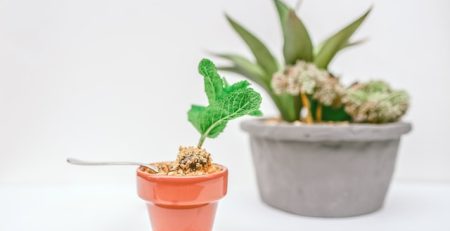
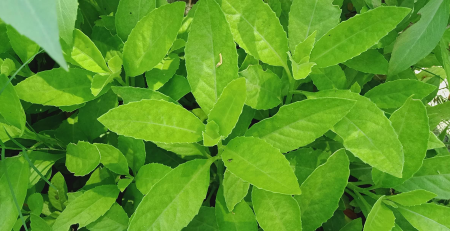

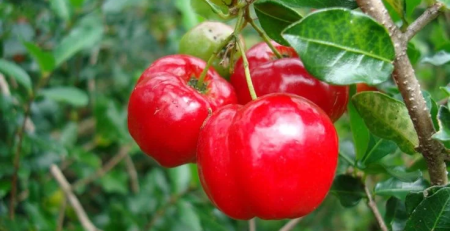


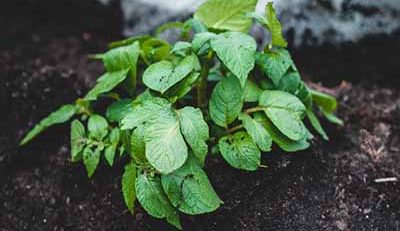
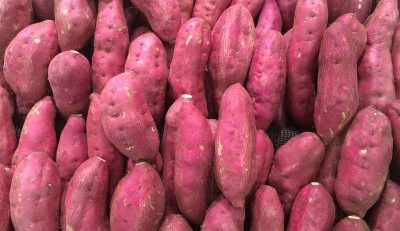
Leave a Reply